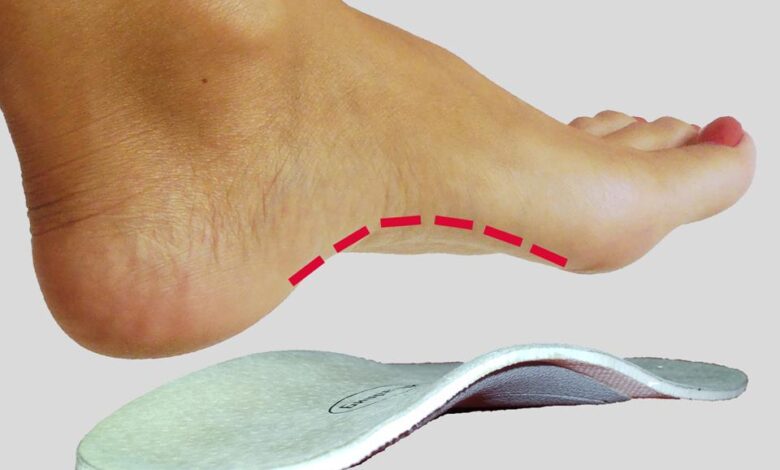How to Choose High Arch Support Insoles for Maximum Comfort at Work

Spending long hours on your feet at work can take a toll on your feet, especially if you have high arches. The right insoles can make a significant difference in your comfort and overall foot health. This guide will walk you through everything you need to know about choosing high arch support insoles for maximum comfort at work.
Understanding High Arches
High arches, also known as cavus foot, occur when the arch of your foot is raised more than normal. This condition can lead to a variety of issues including pain, instability, and increased pressure on the ball and heel of your foot. Recognizing the characteristics and challenges of high arches is the first step in finding the right support.
The Importance of Arch Support
Arch support is crucial for anyone with high arches. Without proper support, your feet can suffer from excessive strain, leading to pain in your feet, ankles, knees, and even your back. High arch support insoles help distribute pressure more evenly across your feet, reduce the risk of injury, and enhance overall comfort during prolonged periods of standing or walking.
Types of Insoles for High Arches
When it comes to insoles, one size does not fit all. There are several types designed to cater to different needs:
1. Cushioned Insoles
These insoles provide extra padding to absorb shock and reduce impact, making them ideal for those who spend a lot of time on hard surfaces.
2. Supportive Insoles
Supportive insoles offer structural support to maintain the natural shape of your foot. They are essential for people with high arches as they prevent the arch from collapsing under pressure.
3. Custom Orthotics
For severe cases or specific needs, custom orthotics made by a podiatrist can offer personalized support tailored to the exact contours of your foot.
Materials to Consider
The material of your insoles can greatly affect their comfort and durability. Here are some common materials used in high arch support insoles:
1. Foam
Memory foam insoles are popular for their ability to conform to the shape of your foot, providing personalized comfort. They are great for cushioning but may wear out faster than other materials.
2. Gel
Gel insoles provide excellent shock absorption and are often combined with other materials for added support and durability.
3. Cork
Cork insoles offer a good balance of support and cushioning. They are also durable and naturally resistant to odor.
4. Leather
Leather insoles are durable and offer moderate support and comfort. They are a good choice for formal or business footwear.
Key Features to Look For
When shopping for high arch support insoles, consider the following features to ensure maximum comfort:
1. Arch Height
Ensure the insoles have a sufficiently high arch to match the contours of your feet. Insoles that are too low won’t provide adequate support, while those that are too high can cause discomfort.
2. Heel Cushioning
Good heel cushioning helps absorb shock and reduce pressure on your heel, which is crucial for those with high arches.
3. Metatarsal Support
Support in the forefoot area can help distribute pressure more evenly across the foot and reduce pain in the ball of the foot.
4. Breathability
Look for insoles with breathable materials or perforations that allow air circulation, keeping your feet dry and reducing the risk of odor.
5. Fit and Sizing
Insoles come in different sizes and can be trimmed to fit your shoes. Ensure you choose the right size for your footwear to prevent any discomfort.
Assessing Your Needs
Before purchasing insoles, it’s important to assess your specific needs:
1. Activity Level
Consider your daily activities and the type of work you do. For instance, if you’re on your feet all day, you’ll need insoles that offer maximum support and cushioning.
2. Footwear
Different types of footwear require different types of insoles. Make sure the insoles you choose are compatible with your work shoes.
3. Foot Issues
If you have additional foot issues such as plantar fasciitis or heel spurs, look for insoles designed to address these problems specifically.
Trying and Testing Insoles
Once you’ve narrowed down your options, it’s time to try them out:
1. Test for Comfort
Wear the insoles for a few hours and see how they feel. Your feet should feel supported and comfortable without any areas of excessive pressure.
2. Check for Fit
Ensure the insoles fit well in your shoes without causing them to feel too tight. There should be no movement or slipping inside the shoe.
3. Walk Around
Walk on different surfaces to see how the insoles perform. They should provide consistent support and cushioning regardless of the surface.
Caring for Your Insoles
Proper care can extend the life of your insoles and maintain their effectiveness:
1. Regular Cleaning
Clean your insoles regularly to prevent odor and bacterial growth. Most insoles can be hand-washed with mild soap and water.
2. Air Drying
Always let your insoles air dry completely before placing them back in your shoes. Avoid direct sunlight or heat sources which can damage the materials.
3. Replacement
Insoles wear out over time. Replace them every 6-12 months, or sooner if you notice a decrease in support or comfort.
Choosing the right high arch support insoles is essential for maintaining comfort and preventing foot problems at work. By understanding your specific needs, considering the various types and materials of insoles, and paying attention to key features, you can find the perfect pair to keep your feet happy and healthy throughout the day. Remember to try out different options, assess their comfort and fit, and take good care of them to ensure they last. With the right insoles, you’ll be able to tackle your workday with greater ease and comfort.



